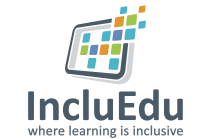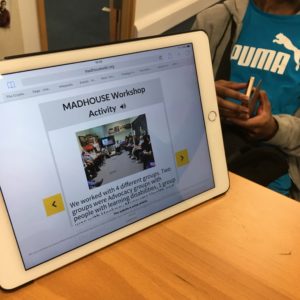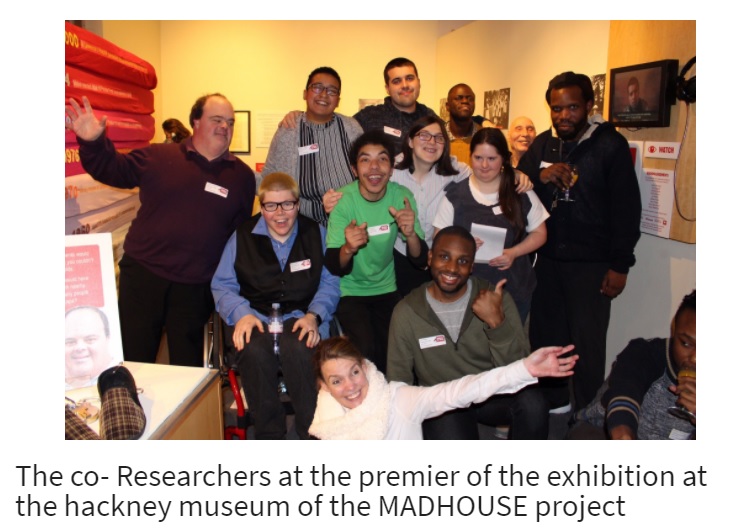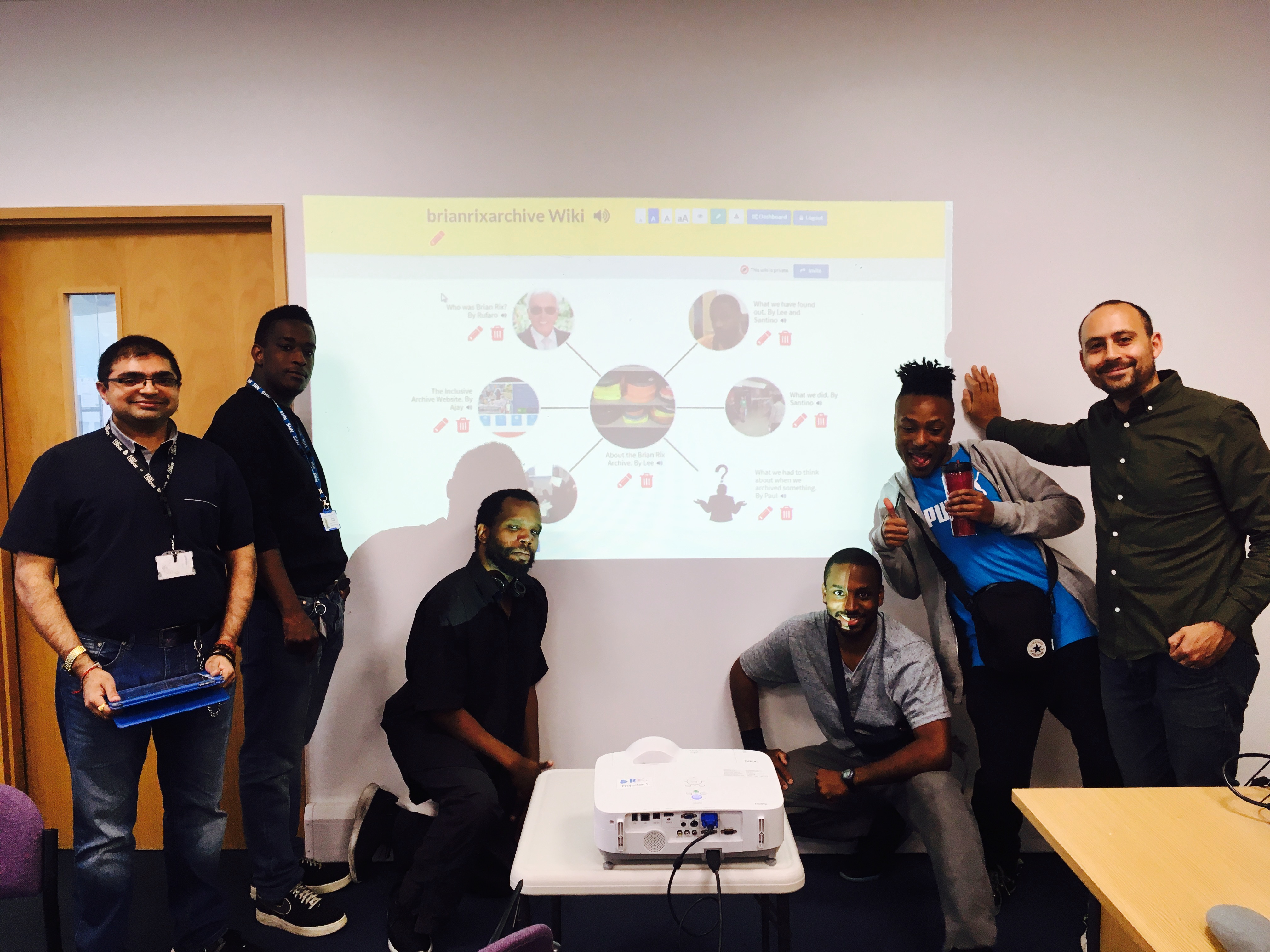WHAT DID YOU DO?
Our group of young adult learners all have learning difficulties, or as they phrase it themselves, different abilities or ‘diff-abilities’. They are part of the local Access All Areas theatre group and have been working on a special project called ‘Madhouse’. The learners used tablets to ‘go mobile’ to capture and narrate their experiences and create a unique multimedia resource (on a Wiki website) for the Madhouse Project. This was a really interesting project looking at the experiences of living in the now de-commissioned long-stay hospitals, the institutions where many people with intellectual disabilities spent their entire lives.
Our group of young adult learners all have learning difficulties, or as they phrase it themselves, different abilities or ‘diff-abilities’. They are part of the local Access All Areas theatre group and have been working on a special project called ‘Madhouse’. The learners used tablets to ‘go mobile’ to capture and narrate their experiences and create a unique multimedia resource (on a Wiki website) for the Madhouse Project. This was a really interesting project looking at the experiences of living in the now de-commissioned long-stay hospitals, the institutions where many people with intellectual disabilities spent their entire lives.
HOW DID YOU DO IT?
Each learner took their handheld devices on multiple off-campus visits to old institutional hospitals, to museum exhibitions and archives. They were able to use the native camera apps to record their experiences and to record interviews with ex-hospital patients. They also used the notes app to prepare questions for interviews and to record their thoughts and script ideas as they went. They used the native sound recording apps to record their thoughts and soundbites. They used the native web browser to build a public Wiki website. They also used the Wiki website as a blog to record their thoughts & feelings about what they saw and then to present that information.
Each learner took their handheld devices on multiple off-campus visits to old institutional hospitals, to museum exhibitions and archives. They were able to use the native camera apps to record their experiences and to record interviews with ex-hospital patients. They also used the notes app to prepare questions for interviews and to record their thoughts and script ideas as they went. They used the native sound recording apps to record their thoughts and soundbites. They used the native web browser to build a public Wiki website. They also used the Wiki website as a blog to record their thoughts & feelings about what they saw and then to present that information.
WHY WERE TABLETS USED/WAS IT BENEFICIAL?
Tablets were used for this project because of their ultimate mobility. Using the tablets meant that the group could write, record interviews, capture images and thoughts and actually build their Wiki website on-the-go. The tablets enabled them to capture and process information in all different from of media (text, image, video, website, sound) and to be very immediate and responsive to the sensitive stimulus they saw at exhibitions. Using tablets with web-baasd applications also enabled them to share this information as a public record.
Tablets were used for this project because of their ultimate mobility. Using the tablets meant that the group could write, record interviews, capture images and thoughts and actually build their Wiki website on-the-go. The tablets enabled them to capture and process information in all different from of media (text, image, video, website, sound) and to be very immediate and responsive to the sensitive stimulus they saw at exhibitions. Using tablets with web-baasd applications also enabled them to share this information as a public record.
HOW DID IT SUPPORT INCLUSIVE TEACHING?
Not all learners in the group are literate. Using sound recording, video and images ensured that all learners in the group were included and able to capture their experiences for the project and actively take part, for example see Kelly’s response to one of the exhibitions the group visited:
Not all learners in the group are literate. Using sound recording, video and images ensured that all learners in the group were included and able to capture their experiences for the project and actively take part, for example see Kelly’s response to one of the exhibitions the group visited:







